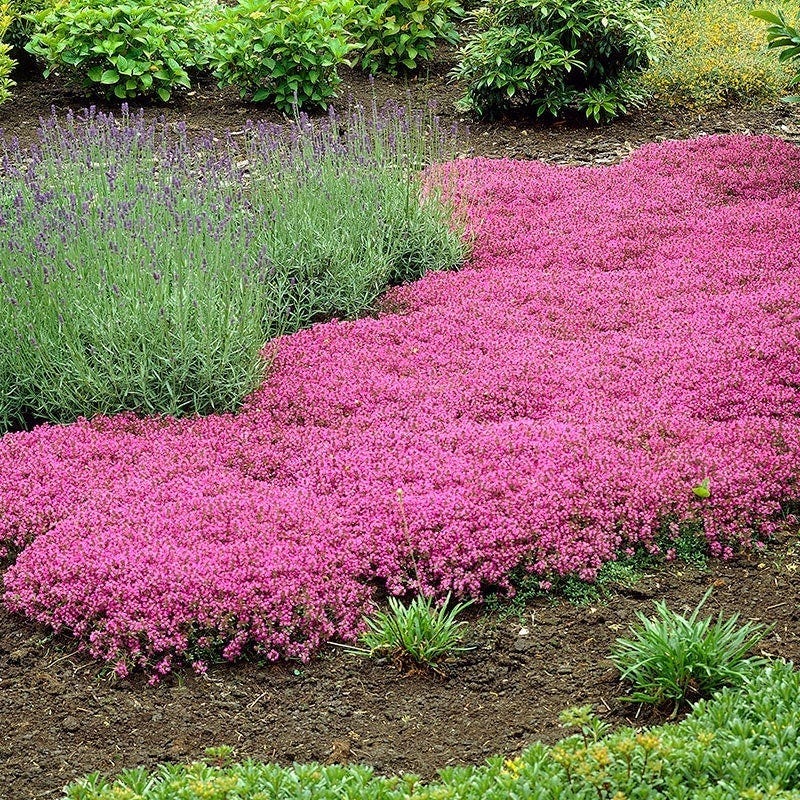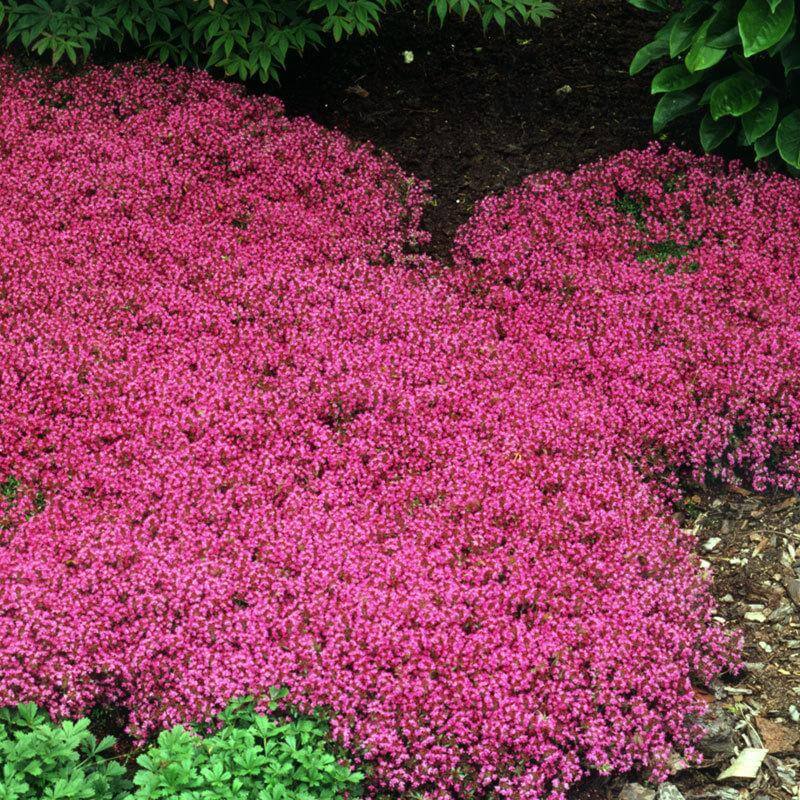Green Is Not the ONLY Color for Lawns. How’s Pinky Red?
By Lawrence Leaf

One plant with the task of many uses, terms, and duties is Red Creeping Thyme (Thymus paecox ‘ Coccineus’).
It is a drought-tolerant, sun-loving, dog & bee-friendly, mosquito-repellent, rabbit and deer-resistant lawn alternate. Yes, a lawn ground cover wearing the superman cape! Meanwhile, it also avoids labor and limits the use of harmful entities to the ecosystem chemicals. Please let me explain with the following tips.
1. Drought Tolerance
Red Creeping Thyme likes natural to alkaline soil moist however well drained. It does not like a lot of clay which is loam, so in a clay situation, you must add sand. It does not like soggy or wet soil so drainage is important. It is native to the southern Mediterranean region with a hardy plant zone of 5 – 10. This plant is recommended for xeriscaping and the grass is not. This means ultimately irrigation costs and water costs, in general, will be greatly reduced. Red Creeping Thyme grows in FULL sun requiring 6 hours or more of sunlight. If you have an area with less than 6 hours, another plant will be recommended like Dwarf Mondo Grass, or Pachysandra. In general, if a plant grows in the shade, and trees are around, plants need Acid – Natural Soil. So the pH in this area of a shade ground cover will need to be adjusted.
2. Dog & Bee friendly – Rabbit and Deer Resistant
Rover or Doddle Bell will not get sick if he or she eats Red Creeping Thyme. Nor do rabbit and deer like the smell of it. If it keeps the deer away well the Hosta and other plants will approve. In these days of the declining bee populations, this lawn would be extremely bee friendly and feed the colony.
3. Mosquito Repellent
Red Creeping Thyme also acts as a mosquito repellent. And when you have guests over for an evening of fun and festivities, it is recommended to prune some of the leaves. Crush them extracting the oil to cover your lawn furniture, tables and surrounding areas. Also, crush leaves on your skin so you will not appear to be so tasty. In most cases, if the odor resists certain insects and animals, rodents do not like it either. It is in the (Lamiaceae) family which is in the same family as mint and rodents do not like mint.
4.Avoiding Labor
Since Red Creeping Thyme is only recommended to be pruned twice a year. (And Then Only To Promote The Beautiful Flower Mass). Cutting the stems back in early spring generates leafy growth supported by spring’s gentle warmth and rainfall. The second time should be after thyme flowers. Avoid pruning too close to the frost deadline so as not to promote new growth to be harmed. Prune small areas by hand and larger areas with a lawn mower raising lever to 4 inches. This prevents weekly or bi-weekly lawn mowing from sending gas fuels all over mother nature’s creation. And you can relax, play tennis, cuddle with your significant other,etc.

5. Avoiding Lawn Chemicals to Harm Our Ecosystem
The only time you may consider an herbicide is in the first couple of years and that would be a pre-emergent. Many pre-emergents are chemical-based. However, corn gluten is not. If you use corn gluten this can attract animals and rodents. It may not be that critical, however, it needs to be pointed out. The general rule of thumb with ground cover is as follows. First-year crawls, second-year creeps, and third-year takes over. By the third year, the Red Creeping Thyme should be established enough to control any and all possible weed growth in your lawn. This will eliminate pre-emergent costs, visits from all the lawn maintenance spraying companies, etc.
6. How To Purchase Red Creeping Thyme (Thymus praecox ‘ Coccineus’)
You can buy Red Creeping Thyme by seed or by plugs in farm supply stores, nurseries or Amazon. Along with it, you do want to purchase some soil supplies like sand if you have too much clay. Or maybe buy a little leaf mold or leaf grow with soggy or loamy soil. Plant one to two plants per square foot. Depending on how much instinctive gratification you want.
7. Be Proud at Completion
Be proud because you just installed a Biodiversity lawn and you truly PLANTED TODAY FOR A BETTER TOMORROW.

Lawrence Leaf, known as the Ambassador of Spring, is a master gardener with decades of experience.
